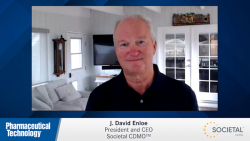
OR WAIT null SECS
- About Us
- Advertise
- Contact Us
- Editorial Info
- Editorial Advisory Board
- Do Not Sell My Personal Information
- Privacy Policy
- Terms and Conditions
© 2025 MJH Life Sciences™ , Pharmaceutical Technology - Pharma News and Development Insights. All rights reserved.
Live from ExcipientFest: The Maker-User Dialogue over Visible Particles
Here at ExcipientFest 2012 in San Juan, excipient manufacturers and users are debating how to move foward surrounding the issue of atypical visible particles found in excipients.
Here at ExcipientFest 2012 in San Juan, excipient manufacturers and users are debating how to move foward surrounding the issue of atypical visible particles found in excipients. A speakers panel was held yesterday afternoon featuring Dale Carter, chair IPEC Americas; Cindy Buhse with FDA; Dave Schoneker of Colorcon and IPEC; and Ann Van Meter with Dow Wolff and IPEC.
This issue is deemed a hot topic and will be discussed in the coming months as IPEC works to develop a guideline on how visible particles should be assessed (is more screening needed on the manufacturer side, more risk assessment?) and how user decisions about acceptance criteria should be made. At the end of the day, these atypical visible particles, often caused by the manufacturing process as a result of compression (i.e., charring), are not considered harmful to the user. In most cases, the particles are extremely small in size (some only visible under a microscope) and there may be only 1 or 2 particles in an entire 20,000 pound container of excipient. In cases where excipient raw material is full of atypical particles–think about the look of salt and pepper together–that’s a different case and not what this dialogue is about.
There are no current regulations in this area and IPEC argues that zero particles is an impossible task–these particles have always been there and always will be there, and now the industry needs to decide what to do about them. The alternative–or status quo–is that entire shipments of raw material may be rejected by the user for a few harmless particles, costing thousands of dollars not to mention affecting the supply chain and leading to potential drug shortages. At the same time, users need to feel 100% assured that their product is safe and that it won’t be rejected by regulators–also a valid argument.
There is no easy answer to this discussion but it’s clear that users and makers of excipients need to be involved to talk about how they’re going to sort this out and what the next steps are. IPEC’s goal is to share the final guideline with FDA.


